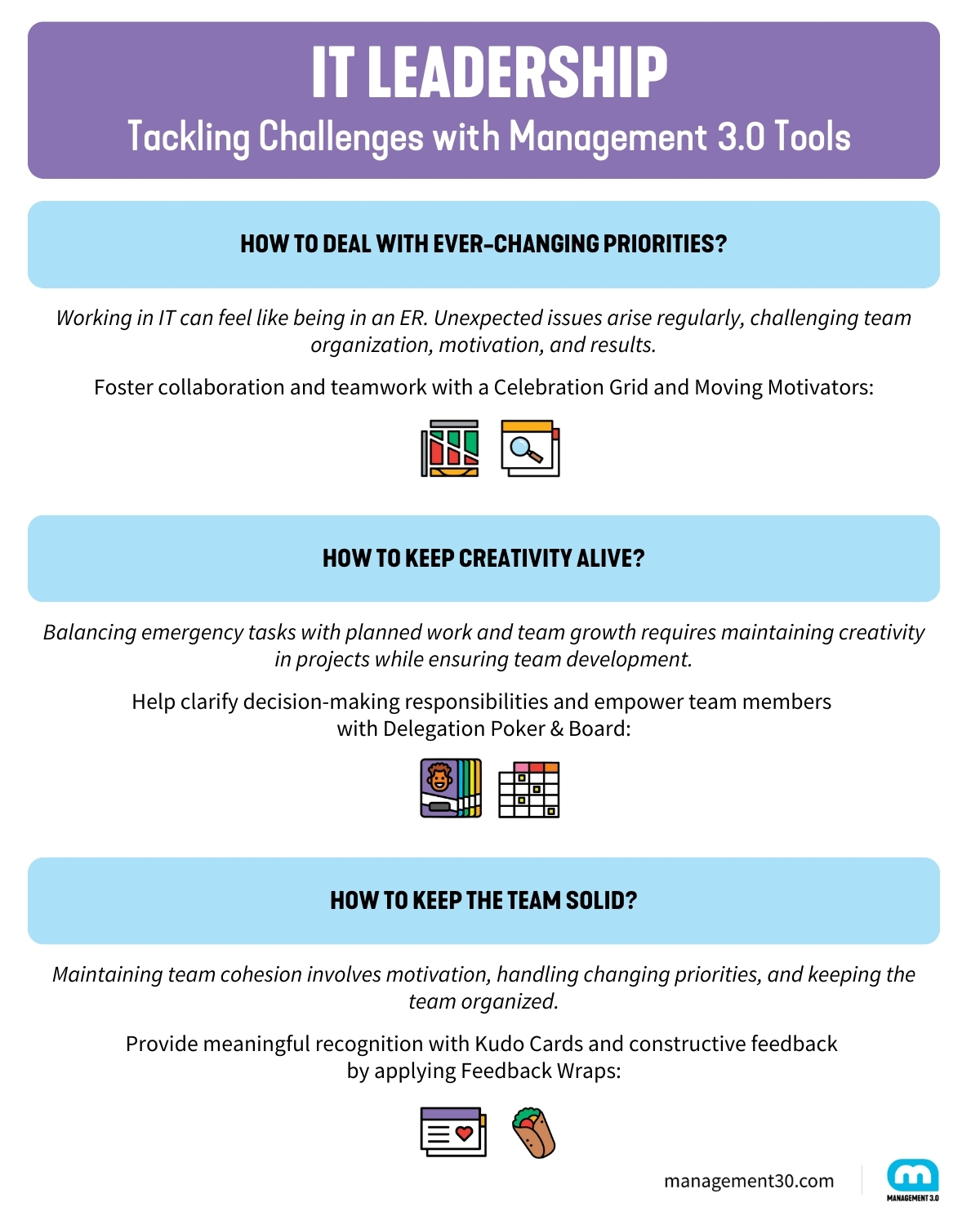This article is for those working in the shadows – the so-called “Invisible Heroes.” There’s a sector within IT that works tirelessly behind the scenes, ensuring that systems run smoothly 24/7, solving issues, planning for growth, and maintaining that growth over time. These dedicated professionals, known as Sysadmins, Infra Support, Infra Specialists, and other titles, have evolved from managing physical servers to remotely handling complex Public Cloud services. Their mission remains the same: to help clients focus on their business without worrying about the technical aspects.
My name is Luis Angenscheidt, and I’ve worked in IT for the past 20 years, primarily in Infrastructure and Cloud, and increasingly in leadership roles. Working in this sector often feels like being in an emergency room (ER), with constant emergencies and urgent requests. Managing priorities and having a well-organized, technically skilled team is crucial.
Despite advancements, the same skills are vital in 2024. Leadership is now more critical than ever. While technical skills are essential, the ability to lead, inspire, and manage teams effectively is equally important. Leadership in IT involves not just overseeing projects and operations but also fostering innovation, driving change, and creating a positive work environment.
These invisible heroes face numerous challenges daily. Understanding these challenges and addressing them through effective leadership is essential for maintaining a productive and motivated IT team. Here are some of the most common challenges they face and how leadership can help overcome them with Management 3.0 tools and practices.
Common IT Leadership Challenges
IT Leadership Challenge #1: Ever-Changing Priorities
Working in IT can feel like being in an ER. Unexpected issues arise regularly, challenging team organization, motivation, and results.
Solution: Foster Collaboration and Teamwork
Collaboration is essential in IT, where teams handle multiple clients with different priorities. Management 3.0 offers practices like the Celebration Grid and Moving Motivators to enhance collaboration.
Celebration Grid: Helps teams reflect on successes and failures, encouraging a culture of learning and experimentation. It fosters a collaborative environment where team members share experiences and learn from each other.
I’ve used this tool to create an open dialogue within my team, allowing us to celebrate our wins and learn from our mistakes.
Moving Motivators: A game that helps teams understand individual motivations. It provides insights into what drives each team member, creating a more motivating and supportive work environment.
I found this particularly useful to tailor my approach to each team member’s unique needs and aspirations.
IT Leadership Challenge #2: Keeping Creativity Alive
Balancing emergency tasks with planned work and team growth requires maintaining creativity in projects while ensuring team development.
Solution: Organize Teams and Empower Members
Delegation Poker and the Delegation Board help clarify decision-making responsibilities and empower team members.
Delegation Poker: A game that helps teams decide on levels of delegation for various tasks. It clarifies expectations and empowers team members, leading to greater engagement and innovation.
In my experience, this tool has been invaluable in setting clear boundaries and encouraging team members to take ownership of their work.
Delegation Board: A visual tool that shows who has decision-making authority for different tasks. It promotes transparency and ensures everyone knows their responsibilities, reducing confusion and improving efficiency.
I use this to ensure everyone on my team understands their roles and has the autonomy to make decisions.
These tools are especially useful for sysadmins, who often have varying expertise and hierarchies. They can help junior members enhance their knowledge and create sub-groups focusing on different client groups.
IT Leadership Challenge #3: Keeping the Team Solid
Maintaining team cohesion involves motivation, handling changing priorities, and keeping the team organized.
Solution: Build Strong Relationships
Regular feedback and recognition are essential for maintaining relationships. Management 3.0 practices like Kudos Cards and the Feedback Wrap help provide meaningful recognition and constructive feedback.
Kudos Cards: A simple way to recognize and appreciate team members’ contributions, boosting morale and reinforcing positive behaviors.
I make it a habit to regularly give out Kudos Cards to acknowledge the hard work and dedication of my team members.
Feedback Wrap: A structured approach to giving feedback that focuses on both positive and constructive aspects. It encourages open communication and helps team members improve, fostering a culture of continuous learning.
This has helped me maintain open lines of communication and build trust within the team.

IT Leadership in Action
Effective leadership in IT involves understanding team dynamics, communicating effectively, and inspiring team members. Good leadership can turn skilled individuals into a high-performing team. Here are additional activities that IT leaders should focus on:
As a Leader in IT, Create a Vision and Set Goals
Articulate a clear vision and set achievable goals. This provides direction and purpose, helping team members understand their contribution to the organization’s success.
One thing I always do is plan goals for both individuals and the entire team. This helps everyone understand their role in the bigger picture and stay motivated. Using Moving Motivators, I get a clear idea of what is valuable to each team member, which helps me promote the right activities to foster what motivates them.
As an IT Leader, Promote Open Communication
Encourage open and transparent communication. Actively listen to team members, address their concerns, and create an environment where everyone feels comfortable sharing ideas and feedback.
I’ve found that using Feedback Wrap not only helps provide constructive feedback but also sets a trusting environment where team members feel safe to express their thoughts and concerns.
As an IT Leader, Provide Opportunities for Growth
Invest in professional development through training programs, mentorship, and challenging projects.
One thing I try to do when a team is in its Forming phase is to conduct a Team Competency Matrix session. This empowers team members to identify their growth areas and create a plan to achieve their goals. Once they create that growth plan, they are committed to it.
As a Leader it IT, Recognize and Reward Contributions
Regularly recognize and reward team members for their contributions. This boosts morale and reinforces positive behaviors.
As a leader, I make an effort to create an environment where team members habitually recognize each other’s efforts. Sometimes these recognitions are more valuable to them than those coming from a manager.
For better IT Leadership, Foster a Collaborative Environment
Create opportunities for collaboration and teamwork. Organize team-building activities, facilitate cross-functional projects, and promote mutual support and cooperation. Management 3.0’s Agile Co-Creation Leadership Workshop is an excellent approach for this.
As an Effective IT Leader, Embrace Flexibility and Adaptability
Be open to change and adaptable to new challenges and opportunities. Encourage continuous improvement and innovation, and adjust strategies as needed to align with project goals and objectives.
I’ve learned that embracing flexibility is key. Everything needs to be improved, and being open to change helps the team stay aligned with project goals and objectives.
Conclusion
IT leadership is critical. While technical skills are essential, the ability to lead, inspire, and manage teams effectively is equally important. By embracing Management 3.0 principles and practices, IT leaders can foster a culture of creativity, collaboration, and continuous improvement, driving their teams to achieve exceptional results. Effective leadership creates a positive work environment, enhancing team performance and contributing to the overall success of the organization. Remember, manage the system, not the people!







